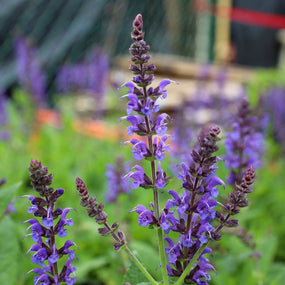
Pollinator Plants for Sale Online
There is a multitude of flowering plants that are both Native and Non-Native species that offer nectar and pollen throughout the growing season that both attract and support a variety of pollinators.
It has never been more important for us as a species to help the pollinators. With the bee population on the decline, it is important for us to provide the much-needed pollen and nectar for these important members of our eco-system to thrive.
Pollinator Plant by Bloom Color

Yellow Pollinating Perennials
21 products

Red Pollinating Perennials
30 products

Pink Pollinating Perennials
41 products

Blue & Purple Pollinating Perennials
79 products

White Pollinating Perennials
29 products
Pollinator Plant by Type

Achillea
6 products

Agastache
4 products

Allium
3 products

Aster
7 products

Astilbe
10 products

Butterfly Weed
4 products

Coreopsis
2 products

Daylilies
3 products

Dianthus
6 products

Dicentra
3 products

Echinacea
17 products

Geranium
5 products

Hibiscus
12 products

Hosta
10 products

Iris
4 products

Lavender
6 products

Liriope
3 products

Nepeta
4 products

Perovskia
3 products

Phlox
8 products

Rudbeckia
4 products

Salvia
5 products

Sedum
5 products

Solidago
2 products
Buying Pollinator Plants Online
Pollinators can be defined as any insect that moves pollen from plant to plant or within the same plant. This process is called pollination and this is how plants produce fruit and seeds. Plants and insects have evolved together over millions of years to rely on one another for life. Humans, for example, would cease to exist without pollinators as this is how our vegetables and flowers we eat are produced.
At garden goods direct we have taken the task of reinvigorating perennial gardens seriously. we have reduced our overall use of population damaging insecticides in favor of a more holistic approach to plant-insect and disease control.
Pollinators are naturally attracted to flowers that fit their physiological traits - mostly the length of their tongue. It's so important to include a variety of flower shapes in your garden. This will, in turn, attract a more diverse array of pollinators.
Honey bees, for example, are generalists, they will visit many flowers from many plant species to collect pollen. Flat or shallow blossoms, such as Woodland Aster or Coreopsis Moonbeam, attract a wide variety of bee species. But longer tongued pollinators such as butterflies are attracted to flowers that have tube shapes, such as Agastache Blue Fortune with their blue flower spikes.
Flowers that bloom in early spring such as dianthus with its pink flowers provide food for newly emerging bumblebee queens, while fall blooms feed pollinators that are seeking the additional energy needed for overwintering. Plantings that groups three or more plants of a single species will attract bees more often because the large cluster of flowers allows them to forage more efficiently.
Pollinators are as vital to native perennial plants as the plants are vital to their success as a species.
When ordering plants online for pollinators we do suggest native plants. Native plants are perfectly evolved for our Native Pollinators. Natives are in some cases drought tolerant which means less upkeep and maintenance for you.
There are many ways you can help pollinators and maybe you aren't ready to make the jump to go all native. We say that's ok. What's important is to get the plants out to the garden and get the pollinators fed. There are many ways to help.
There are seed mixes available to plant if you have the time to invest in waiting to see if the seeds germinate but if you busy like we are well-established plants are a fast way to jump in and help.
